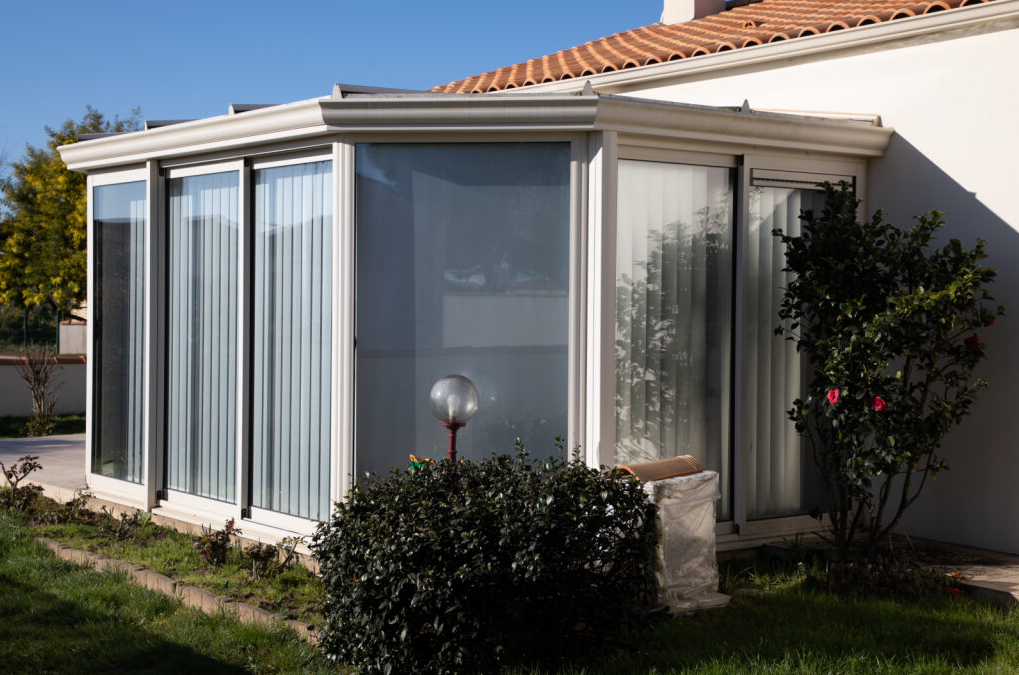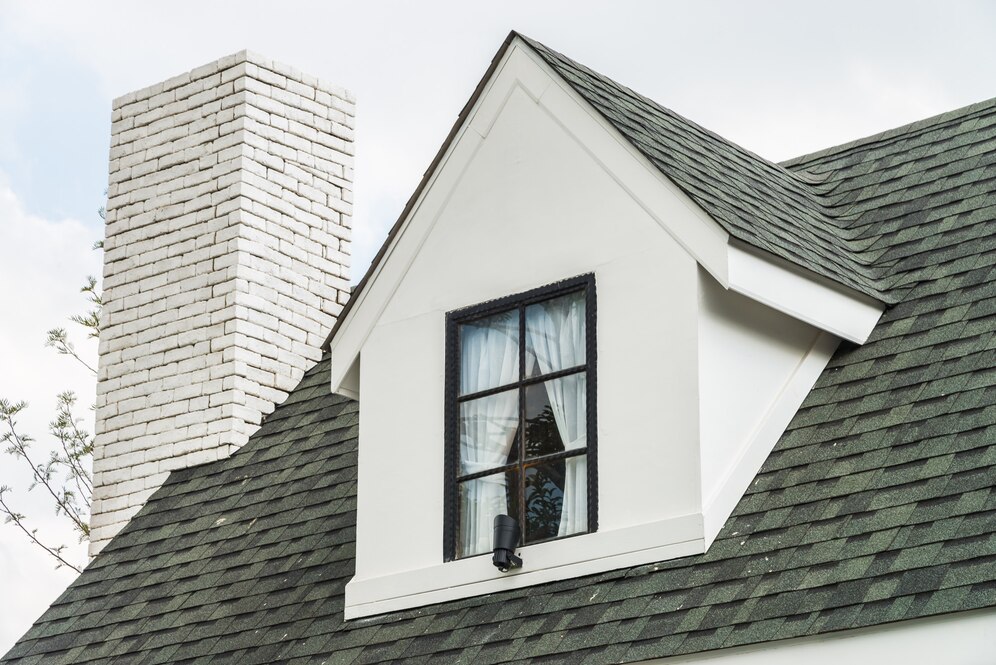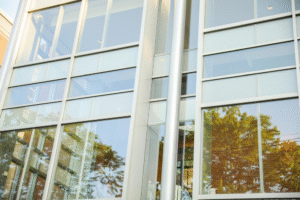
Incorporating insulated doors and windows into your home design is a practical solution for maintaining an ideal indoor temperature, regardless of the season.
They provide an effective barrier against external temperature fluctuations, ensuring comfort and efficiency.
Whether you’re building a new home or upgrading an existing one, understanding the benefits of these energy-saving solutions is the first step toward creating a more sustainable living space.
This blog explores how insulated doors and windows contribute to energy conservation, their environmental benefits, and how they can improve your home’s comfort and efficiency. Check it out!
What are insulated doors and windows?
Insulated doors and windows are designed to enhance energy efficiency by minimizing heat transfer between a home’s inside and outside.
Unlike traditional doors and windows, these modern solutions incorporate advanced materials and technologies to maintain an optimal indoor temperature, reducing the need for heating and cooling systems and cutting costs.
These are the key features::
Double or triple-glazing
Double or triple-glazed glass creates pockets of air or gas, such as argon, which insulates to prevent heat exchange.
Enhanced sealing
The seals around insulated doors and windows are designed to eliminate drafts and leaks. High-performance weatherstripping materials ensure air stays where it belongs (inside during the winter and outside during the summer).
Thermal break frames
The frames of doors and windows are often made from materials with thermal barriers, such as uPVC or thermally broken aluminum, which reduce heat transfer.
These features improve thermal performance and contribute to noise reduction and increased durability.
Now, let’s understand how insulated doors and windows impact energy consumption.
How insulated doors and windows contribute to energy conservation
These doors and windows reduce energy consumption by minimizing thermal exchange between the building’s interior and exterior areas.
They help retain heat during the winter and keep interiors cool during the summer, reducing the need for artificial heating and cooling systems.
This leads to lower bills and a smaller carbon footprint.
Mechanisms of energy conservation
- Heat retention in winter: Insulated doors and windows prevent warm air from escaping during cold months. Double or triple-glazing and gas-filled layers reduce thermal conductivity, ensuring your heating system works efficiently without waste. For example, homes equipped with energy-efficient windows can save up to 20% on heating costs, according to the U.S. Department of Energy studies.
- Heat blocking in summer: In warmer months, they prevent external heat from infiltrating your home. Low-E glass coatings reflect solar heat, maintaining a comfortable indoor environment and reducing the reliance on air conditioning. This mechanism conserves energy and extends the lifespan of HVAC systems.
Still don’t believe this could be the best option for your space? Check out these examples of how this upgrade works in real life:
A household can save approximately $126 to $465 annually on energy bills, depending on their region and climate, as reported by Energy Star.
This range depends on various factors, including the home’s location, climate, and the existing level of insulation. Here’s how these savings are calculated:
Reduction in heat loss and gain
Standard doors and windows can account for up to 25-30% of residential heating and cooling energy usage due to air leaks and thermal transfer. These inefficiencies are drastically reduced by upgrading to insulated doors and windows.
Energy use before and after upgrading
An average U.S. household spends about $1,500 annually on energy bills, roughly 50% attributed to heating and cooling. Assuming a household uses $750 for temperature control, a 15-30% reduction in this cost—achieved by installing yields an annual savings of $112 to $225. For households in extreme climates with higher heating and cooling costs, the potential savings increase accordingly.
Regional variations in costs
In areas with high utility rates, such as the Northeast or California, savings are amplified. For instance, if a household in these regions spends $2,000 annually on energy, with $1,000 allocated to heating and cooling, a 20-25% reduction equates to $200-$250 saved each year.
Long-term benefits
Over a typical 20-year lifespan of high-quality insulated doors and windows, total savings can range from $2,520 to $9,300, depending on the household’s initial energy use and local energy prices.
This offsets the upfront investment and adds long-term financial and environmental benefits.
Reducing thermal exchange for long-term benefits
Insulated doors and windows create a more consistent indoor temperature by decreasing thermal exchange, which enhances overall comfort. This also reduces the strain on heating and cooling systems, leading to fewer maintenance issues and longer equipment life.
Economic and environmental benefits of insulated doors and windows

These advanced systems reduce monthly utility bills and help lower greenhouse gas emissions by improving energy efficiency.
This dual benefit makes them a valuable addition to any modern, eco-conscious home.
Economic advantages:
- Lower energy bills: By minimizing heat loss in winter and heat gain in summer, they reduce the workload of HVAC systems, leading to savings. According to the Energy Information Administration (EIA), households with energy-efficient windows can save up to 35% annually on heating and cooling costs.
- Increased property value: Homes with insulated doors and windows are often more attractive to buyers, as energy efficiency has become essential in property valuation. You can expect a higher return on investment when selling, thanks to the improved comfort and economic choices.
Environmental benefits:
- Reduced carbon footprint: Insulated doors and windows indirectly decrease the reliance on fossil fuels for electricity generation by lowering energy consumption, leading to a reduction in carbon dioxide emissions. For example, upgrading to energy-efficient windows can reduce a home’s annual carbon emissions by an average of 1,000 pounds, per the Environmental Protection Agency (EPA) data.
- Sustainability in construction: The materials used in the composition, such as recycled aluminum frames or sustainably sourced wood, typically have a smaller environmental impact compared to traditional options. Selecting these sustainable materials enhances the home’s eco-friendly appeal.
Financial and environmental synergy
Investing in insulated doors and windows creates a ripple effect of benefits:
- Reduced electricity costs mean more disposable income for homeowners.
- Decreased energy usage helps combat climate change.
How to choose insulated doors and windows for your home
Selecting the perfect insulated doors and windows for your home can seem daunting, given the various options available.
However, by focusing on specific factors like energy performance, climate compatibility, and aesthetic appeal, you can make an informed decision that meets your functional and stylistic needs. Here’s a detailed guide to help you choose wisely.
1. Understand the basics
Insulated doors and windows are designed to minimize heat transfer, using features like double or triple glazing, advanced sealing systems, and thermally efficient frames. These components work together to maintain a comfortable indoor temperature.
2. Evaluate your climate and home orientation
The efficiency depends on the local climate and your home’s orientation.
- Cold climates: Choose windows with low U-values and high R-values, which indicate excellent thermal resistance. Triple-glazed options may be ideal.
- Hot climates: Choose windows with low Solar Heat Gain Coefficient (SHGC) ratings to block excessive heat from the sun.
- Mixed climates: Select windows with variable performance ratings or dual Low-E coatings to adapt to seasonal changes.
Consider how much sunlight your home receives during the day. South-facing windows may benefit from additional shading to complement their insulation features.
3. Choose the right glass
The type of glass used in insulated doors and windows impacts their performance.
- Double or triple glazing: Provides superior insulation compared to single-glass panes by incorporating insulating gas layers like argon.
- Best for: Homes in regions with significant temperature fluctuations or those seeking optimal thermal efficiency.
- Low-Emissivity (Low-E) coatings: These coatings reflect infrared heat while allowing natural light to pass through, making them ideal for energy efficiency.
- Best for: Homeowners seeking maximum energy efficiency without sacrificing natural light.
- Tempered glass: Heat-treated glass that is stronger than regular glass and shatters into small, rounded pieces instead of sharp shards upon breakage.
- Best for: Homes in areas where safety regulations require impact-resistant materials, such as near pools or staircases.
- Laminated glass: Constructed by bonding two layers of glass with a plastic interlayer, laminated glass holds together when shattered.
- Best for: Homes in hurricane-prone regions or areas with high wind and storm exposure.
4. Prioritize frame materials
Frames are essential for the overall efficiency of doors and windows. These are the main options, each with unique characteristics:
- Vinyl: Affordable and highly resistant to heat transfer.
- Fiberglass: Durable, low-maintenance, and excellent for insulation.
- Wood: Aesthetic and naturally insulating, though it requires more maintenance.
- Aluminum with Thermal Breaks: Lightweight and sleek, but ensure it includes a thermal break to minimize heat transfer.
5. Pay attention to sealing and weatherstripping
Look for products with durable weatherstripping and multi-point locking systems to ensure a tight seal against air leaks. Regular seal maintenance is also essential to maintain efficiency over time.
6. Match aesthetics with functionality
While energy efficiency is essential, the design and style of insulated doors and windows should complement your home’s overall aesthetic.
- Traditional Homes: Opt for wooden frames or custom designs that match the architectural style.
- Modern Homes: Sleek aluminum or fiberglass frames with large glass panels offer a contemporary look.
Many manufacturers offer customizable designs, allowing you to balance form and function effortlessly.
7. Check certifications and ratings
Always verify that the insulated doors and windows you choose meet recognized energy standards. Look for certifications such as:
- ENERGY STAR®: Indicates products meet high energy efficiency standards.
- NFRC Ratings: Provides detailed information on U-values, SHGC, and air leakage.
8. Consider your budget and long-term savings
While premium materials may have a higher upfront cost, their long-term benefits often outweigh the initial investment.
Calculate potential savings on heating and cooling bills to determine the most cost-effective option.
Choosing the right insulated doors and windows involves balancing climate suitability and aesthetic preferences. You can enhance your home’s comfort while reducing energy consumption by prioritizing features like advanced glazing, thermally efficient frames, and durable seals.
Are you ready to select insulated doors and windows?

Investing in insulated doors and windows is a practical and impactful step toward improving your home’s energy efficiency, comfort, and sustainability.
With Top Notch Remodeling, our doors and windows ensure optimal performance by reducing heat exchange, lowering energy bills, and contributing to a greener future.
Ready to upgrade your home with energy-efficient solutions?
Contact us today to explore insulated doors and windows tailored to your needs.



